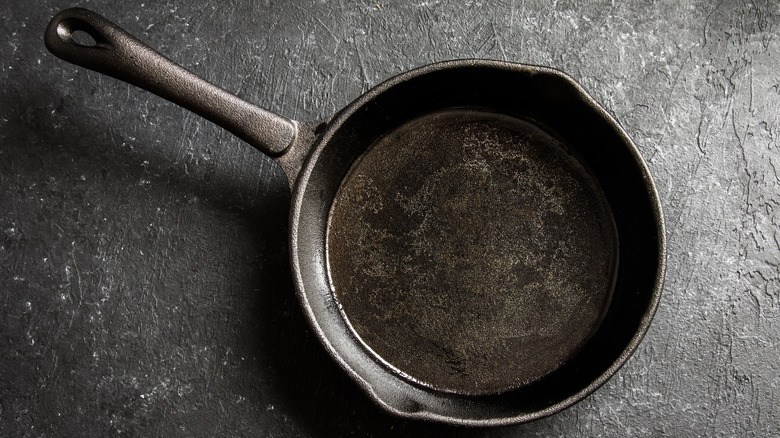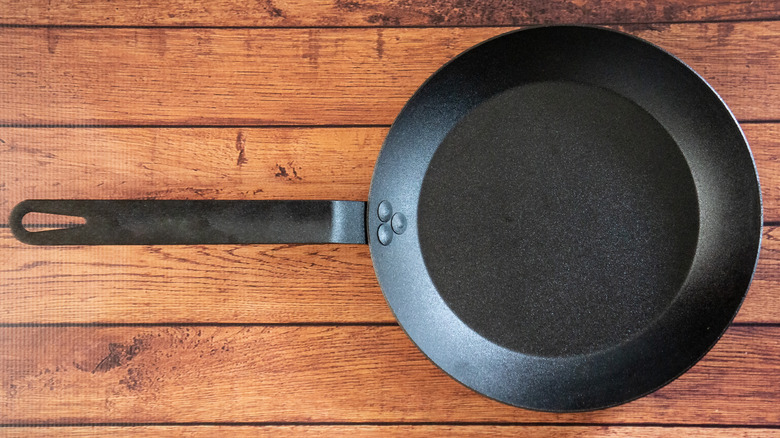The Lesser-Appreciated Pan To Substitute For Cast Iron
Any foodie or cooking show enthusiast is undoubtedly aware of the love some cooks have for cast iron skillets. These old-fashioned pans are incredibly versatile and virtually indestructible, meaning they are seen by many as a quality kitchen investment. As The Huffington Post Canada points out, though, there are some disadvantages to using these pans. They can be incredibly heavy, making them cumbersome to work with, and they require special maintenance to keep them in peak condition and prevent rust.
If you're looking for a kitchen tool that might be a little easier to handle with some of the advantages of cast iron, you should consider this oft-overlooked substitute: carbon steel cookware. Carbon steel pans can mimic many of the benefits of cast iron with less hassle. Like cast iron, carbon steel is made with a combination of iron and carbon. Ironically, carbon steel actually contains less carbon than cast iron. The similar composition means both materials act as good heat conductors and can withstand high temperatures in the oven or on the stove. However, the extra carbon in cast iron makes its structure less stable. This is why the cookware is made thicker and heavier than its carbon steel counterparts to work effectively.
Advantages of carbon steel
Because cast iron cookware is made thicker to improve its stability and lifespan, it is significantly heavier than carbon steel, which can be a disadvantage for many cooks. As the food blog Hungry Huy explains, most cast iron pans weigh between 4 and 12 pounds, whereas carbon steel pans weigh only 2 to 6 pounds. This can be a major difference for someone with joint pain or a lack of upper arm strength. Additionally, being thinner means that carbon steel pans heat up and cool down more quickly than cast iron, per Lodge Cast Iron. They also heat more evenly, which makes them a more popular choice in many restaurants.
Although carbon steel has an advantage in weight and cooking times, it does not eliminate all the extra work that comes with using a cast iron pan. Like cast iron, carbon steel is prone to rust if not properly cared for — it will also require special washing procedures. It needs to be regularly seasoned with oil in order for it to maintain its non-stick properties as well. Once its non-stick coating is created, though, carbon steel may be better for cooking stickier items like fish and eggs.
The downside is that the lighter-weight dish will cost you more. While both types of pans are likely to last a lifetime, Hungry Huy notes that carbon steel pans start at around $45, as opposed to a mere $25 for cast iron.

